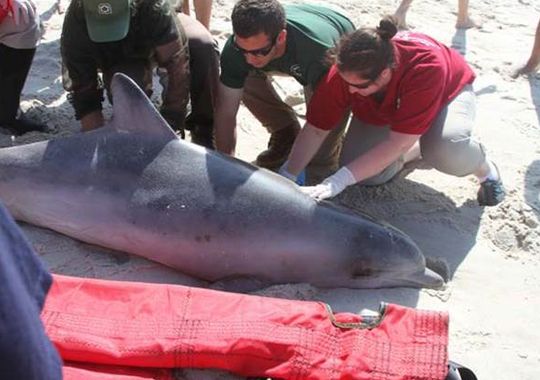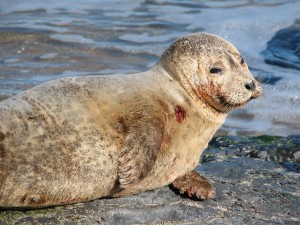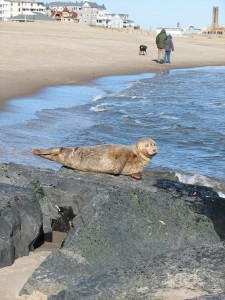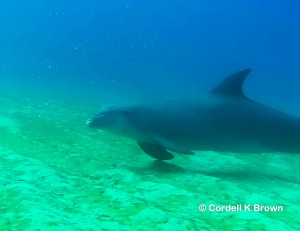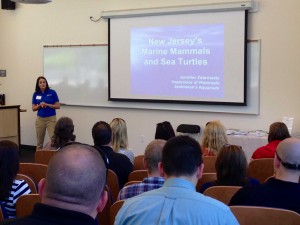A Memorable Visit: The Bottlenose Dolphin in the South River
South River Dolphin will be Remembered by Many
by David Wheeler, Executive Director
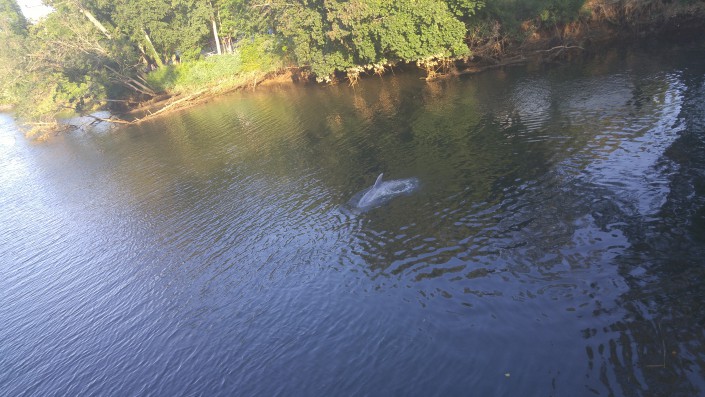
This time of year, many beachgoers thrill to the sight of pods of bottlenose dolphins swimming past, each animal porpoising over the moving sea’s surface before it disappears back under the surf for another few moments. Recent weeks have brought some lucky New Jerseyans the chance to watch seemingly never-ending pods of dolphins swim past, one after another like some Atlantic Serengeti.
About the last place you might expect to see a bottlenose dolphin is a stone’s throw from the commuters speeding past on eight traffic lanes of Route 18 on the Old Bridge – East Brunswick border in the central heart of the state, a good 20-minute drive from the nearest bay coast. Here, amidst the parking lots and criss-crossing thoroughfares and working-class stores, crowds of families and couples and kids young and old lined up two deep, day after day, last week along a narrow bridge over the South River. All to watch a wild bottlenose dolphin from a closer vantage point than most of us will ever get outside of an aquarium or amusement park.
Every 50 seconds or so, an anxious murmur gave way to gasps, fingers pointing, cell phone cameras clicking, and cries of “There it is!” The dolphin breached the surface for just long enough to get its necessary air – a second, two at most – before vanishing again. For several days the dolphin returned, as the media reported on it and the crowds grew larger.
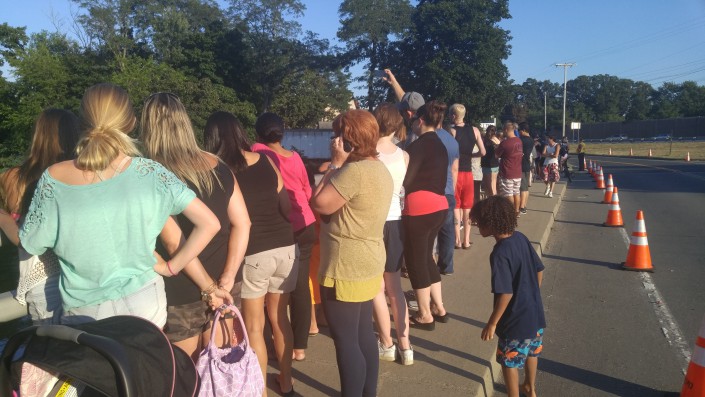
While the dolphin swam underwater, talk amongst the visitors ranged from awe – “I saw it Mom!” and “He’s bigger than I thought!” – to curiosity – “Are they supposed to be here?” and “Where will it come up next?” – to emotion – “I can’t believe we’re lucky enough to see this!” and “It’s beautiful!”
But the discussions also presciently invoked fear and concern – “Is it sick?” “Stranded?” and “Shouldn’t it be with the other dolphins?”
As it turned out, the dolphin was indeed sick. It was dying. Trained volunteers tried to shepherd it out to more accommodating waters, but the dolphin couldn’t make it back out to the open water from its final resting place.
The dolphin was considered to be emaciated, and will be studied with a necropsy. We have no insight yet on whether the dolphin suffered from morbillivirus, a disease which has claimed the lives of hundreds of bottlenose dolphins in recent years along the East Coast.
My son and I watched the dolphin on a Friday evening, not long before dusk. Later that weekend I learned that the dolphin had died the very next day.
Yet in spending its last few days as it did, the dolphin became an unexpected guest for a local inland community that never anticipated such a marine visitor – but cherished the chance to greet it. All told, the dolphin spent much of a week in its retirement home upstream in the South River, in the shadow of Route 527 to the steady hum of Route 18 traffic, visited and admired by many hundreds of people.
Just like past New Jersey visitors, similar to the Trenton beluga whale and the Merrill Creek Reservoir snowy owl, the South River dolphin found an out-of-the-way place that it could call home, albeit temporarily.
The South River dolphin has finally moved on – but it will be remembered.
David Wheeler is the Executive Director of Conserve Wildlife Foundation of New Jersey.
